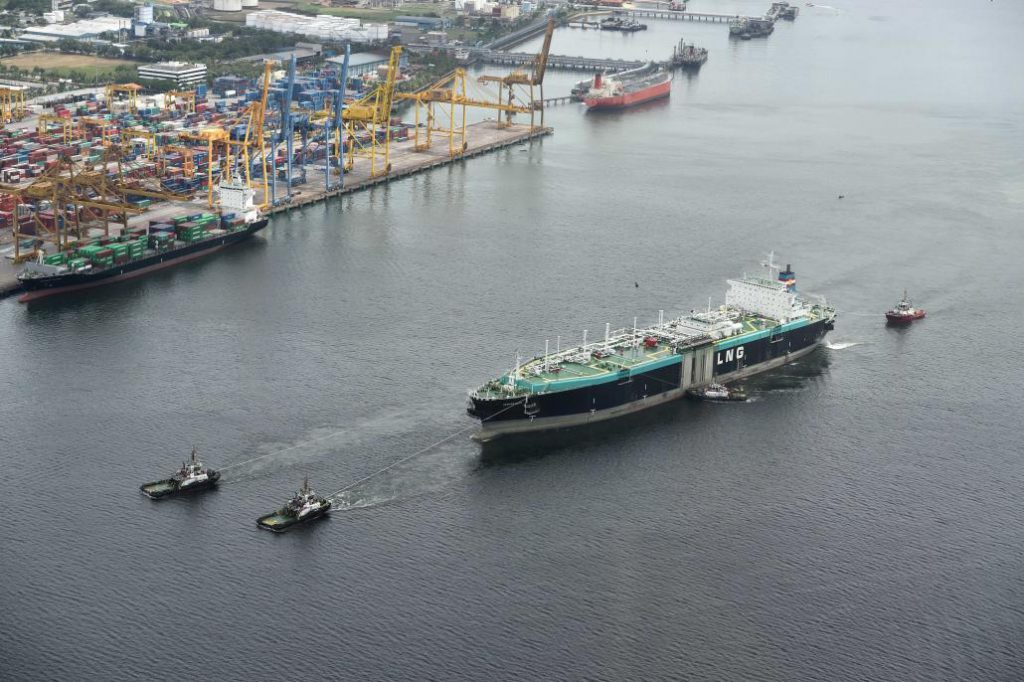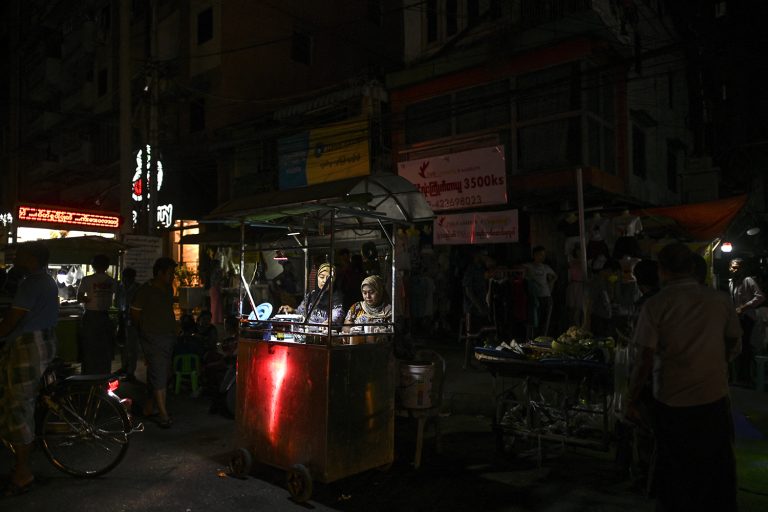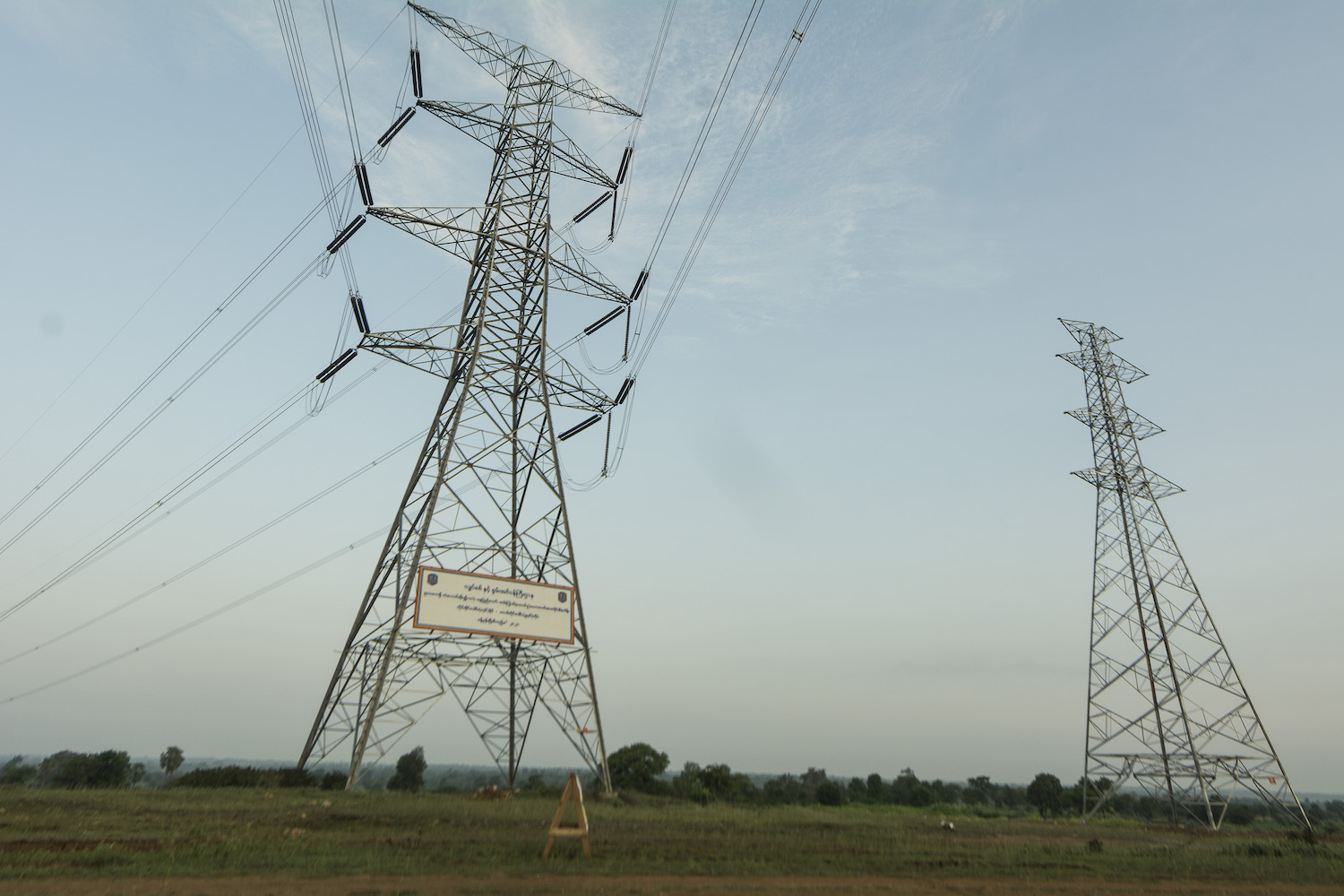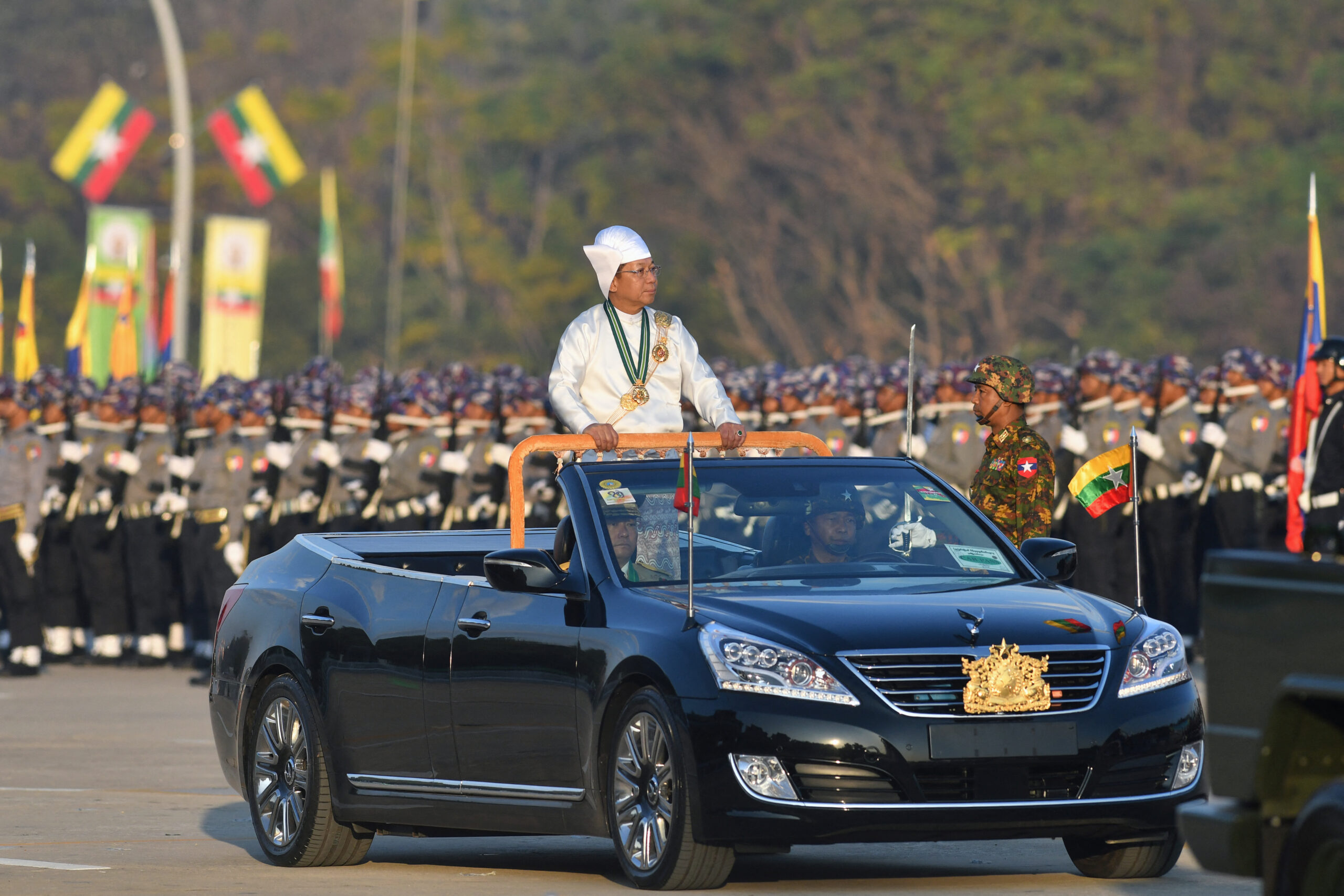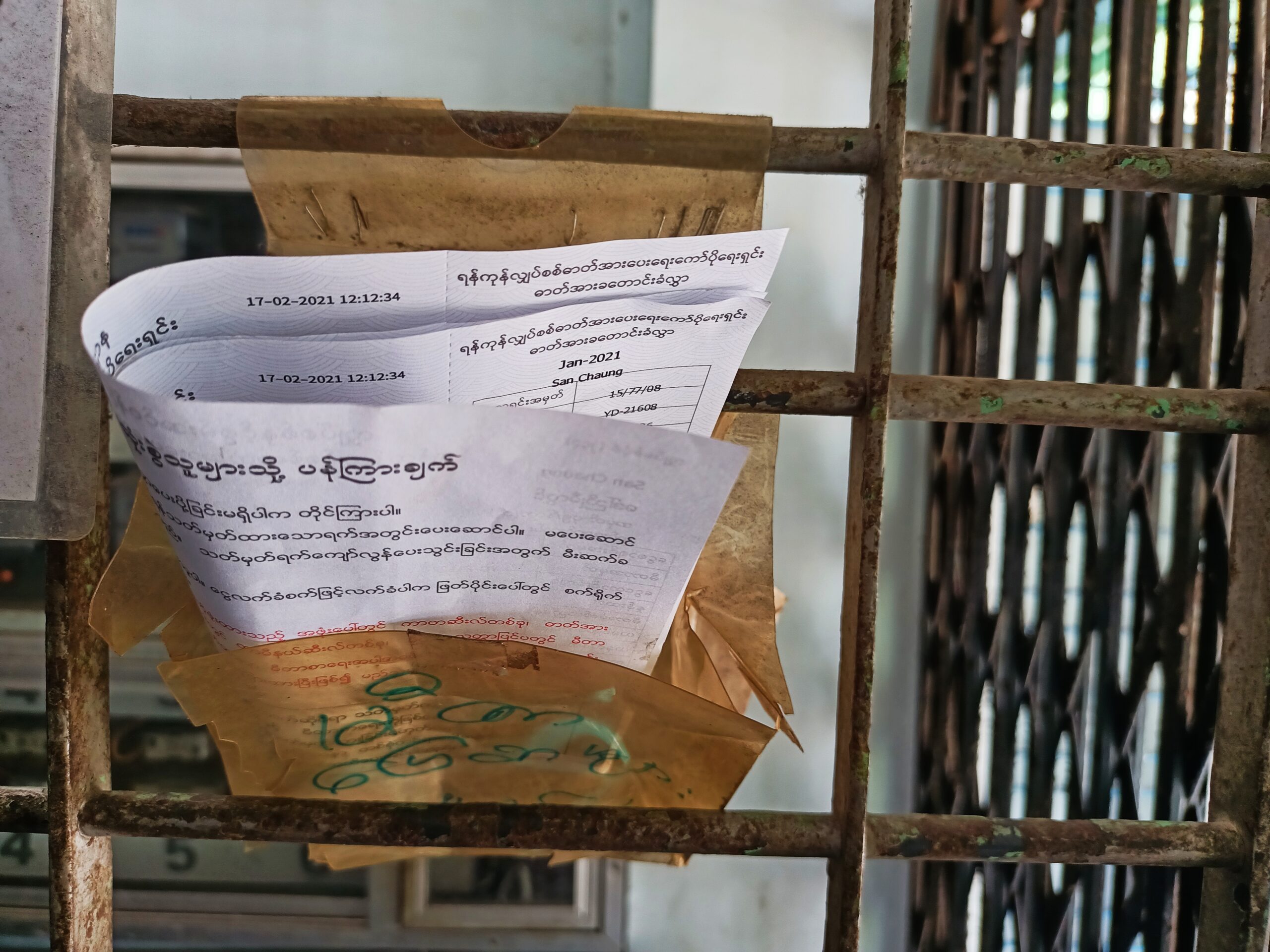On January 30, the Ministry of Electricity and Energy issued a “notice to proceed” to four consortia that had proposed gas-fired power plants in Myanmar. The largest project to get the green light was a 1,390-megawatt plant at Mee Laung Gyaing in Ayeyarwady Region that would be fuelled by imported liquefied natural gas shipped in on huge tankers and unloaded at a floating storage regasification unit docked 1.6 kilometres offshore.
Proposed by China’s Zhefu Holding Group and Supreme Trading, the project is scheduled for full completion in mid-2021 and with an estimated price tag of US$2.4 billion is one of the largest investments in Myanmar’s power sector. Supreme Trading is also involved in another of the four projects, for a 135MW gas-fired plant at Kyaukphyu in Rakhine State in partnership with Sinohydro of China. Frontier’s Kyaw Ye Lynn spoke to Supreme Group executive director U Htu Htu Aung by email about the Mee Laung Gyaing project last week.
Are there any other companies involved in your project?
Zhefu Holding Group and Supreme Trading are the only investors in the consortium but other companies are providing technical expertise for the feasibility study and design.
What are these companies and what are their specific roles?
China Energy Engineering Corporation (CEEC) is the main consultant for the feasibility study, [while] world-renowned companies contributed technical expertise on LNG, marine structure, transmission lines and the power plant. Ramboll Environ from Denmark are conducting the environmental and social impact assessment for the project.
In June 2017, Supreme announced that Switzerland’s Gunvor Group was involved in the project. Is that still the case and if so what is Gunvor’s role?
Gunvor is not part of the project investor consortium but one of the possible future suppliers for LNG.
Are any other companies, such as China Energy Engineering Corporation, involved in the Kyaukphyu project?
The feasibility study for the Kyaukphyu Project was completely undertaken by Sinohydro Corporation on its own because Sinhydro is part of [Power Construction Corporation of China] which is a global Fortune 500 company and has in-house capabilities for all technical aspects.
What’s the significance of the notice to proceed issued by the ministry? How does it advance your proposed projects?
The notice to proceed issued by the Ministry of Electricity and Energy enabled the project developer companies to continue with the implementation of the project, including negotiation and entry of the project agreements with the ministry, completing Environmental and Social Impact Assessments, and commencing necessary preparations for the construction of the project and financial closing. The notice to proceed provides firm approval for the project proposals from the [Myanmar government] and a commitment from the project developers to commence investment in the projects as well.

Representatives from Supreme Group and China’s Zhefu Holdings in Nay Pyi Taw on January 30, the day they received a notice to proceed with a major power project from the Ministry of Electricity and Energy. (Supplied)
What are the next steps in terms of moving forward both projects?
The next steps will be to negotiate and sign project agreements with the Ministry of Electricity and Energy, complete the EIA [and] SIA, [achieve] financial closing, and construct the power plant, transmission lines and related facilities.
How realistic is the timeframe for Mee Laung Gyaing?
The target timeframe of 36 to 42 months for the Ayeyarwady LNG project is quite realistic as per our feasibility study, provided that necessary project milestones are achieved on time as planned [through the] cooperation between project developers, local communities, Ministry of Electricity and Energy and Ayeyarwady Region government.
What are the major hurdles that need to be overcome to begin construction? How significant a challenge will transmission lines pose?
As the project is environmentally friendly, using clean LNG fuel, and power generation is an important and urgent investment for the country, we do not see any significant hurdles to begin construction. According to our public consultations, local communities in the project area fully support and welcome and the project, and the ministry and regional government have committed their support in [terms of] obtaining all necessary approvals and permits including the right of way for transmission lines.
We know that Mee Laung Gyaing will use LNG, but what is the source of gas for Kyaukphyu?
The Kyaukphyu project will use the existing gas allocation from the Shwe gas field.
Why did the consortium propose a 135MW combined-cycle gas plant for Kyaukphyu rather than a larger project?
As the Kyaukphyu project will be using natural gas from the Shwe field, 135MW is the optimum capacity based on natural gas availability.
Will the Mee Laung Gyaing consortium be the developer? Or do you plan to take the project out into the market and secure an outside developer?
Our consortium will be the developer and will remain investors in the project for the entire concession period. Supreme in particular shall maintain its investment in the project for the entire concession period to safeguard the social objectives of the project, and interests of our country and local communities. However, it is possible for multi-national corporations with specific technical capabilities – for example, LNG supply expertise – to join the project consortium if their capabilities are synergetic and complementary to our projects.
What technologies do you plan to use in the power plants? Which turbine suppliers are being considered?
Both projects will use brands and technologies from Europe and the United States for the main equipment in accordance with our project proposals.
What is the anticipated investment for both projects?
The anticipated investment for the Ayeyarwady LNG project is $2.4 billion and the Kyaukphyu combined-cycle gas power project is approximately $200 million.
How long do you anticipate it will take to secure financing? Will you have a sovereign guarantee from Myanmar that it will honour the terms of the PPA?
Both projects will be financed by syndicated loans from international banks. It is our expectation that the loans from international banks shall be underwritten by insurance from international export-import credit corporations, and also guaranteed by the Myanmar government through project agreements. A sovereign guarantee is desirable but not compulsory for financing of this project.
Negotiations for financing the projects have already started for some time now and once the necessary project agreements are signed, financing can be closed within a short time frame.
Will you seek Chinese government support under the Belt and Road Initiative for these projects?
Due to the involvement of companies from China, it is natural for the consortium to seek possibility of Chinese government support under the Belt and Road Initiative. However, such applications will be limited to economic aspects only with the aim of improving bilateral relations between Myanmar and China.
Without a sovereign guarantee, how much confidence do you have entering into these projects given the government’s power tariff is so low and it is already paying hundreds of millions of dollars a year in subsidies?
The Ministry of Electricity and Energy always strives to acquire electricity from independent power producers at the most competitive tariffs for the benefit of the country and the people. This policy has not changed and [was] used in evaluating our project proposals.
Due to greater [market] efficiency … and increased production worldwide of natural gas we are able to source the fuel at the most competitive prices in international fuel markets. [Because of the] availability of more efficient, high-quality gas turbines at more competitive prices and availability of soft financing for long-term utility investments backed up by secure agreements, we have been able to achieve the target electricity generation price of the Myanmar government.


